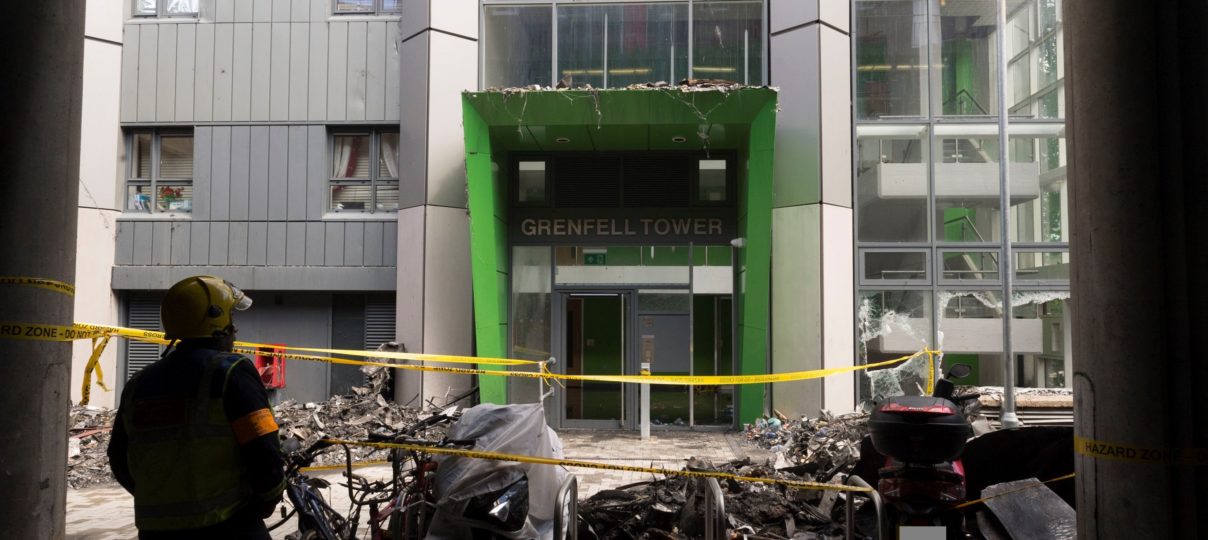
On the 14th of June, 2017, shortly before 1:00 a.m., a 24-storey building with 129 flats, the Grenfell Tower, caught on fire in the area of North Kensington in London.
It took just 15 minutes for the fire to spread from the 4th all the way to the 24th floor. The building had been burning for a whole day, while it took almost three days for the firemen to completely extinguish the fire.
With at least 80 presumed fatalities, around the same number of injured and dozens of residents and visitors missing, Scotland Yard warns that the precise number of casualties may not be known before the end of the year. So far, 32 victims have been identified and confirmed dead.
According to the authorities, a faulty Hotpoint fridge-freezer on the fourth floor was the source of the fire, whereas aluminum composite panels used for insulation and cladding the exterior of the building proved particularly flammable and created a “chimney effect” that allowed the fire to quickly spread over 20 floors.
The building had undergone refurbishment works that were completed in May 2016 but Leaseholder groups had been complaining about safety for years before the fire. In fact, work to cover gas pipes outside the flats was still in progress when the fire started and as a survivor put it, one could hear “explosions everywhere you looked”.
Police investigations have concluded that Grenfell Tower has been home for 350 people. It is difficult, though, to accurately estimate the number of people present in the building at the time of the fire due to undocumented migrants potentially having resided in the building and visitors having been present, particularly since the fire occurred during a night of Ramadan.
The authorities have announced that survivors and the families of the deceased victims will receive state funding for legal representation at the inquiry. However, many survivors and family members may be afraid to seek medical or legal help due to their immigration status, despite reassurance from both the Home Office and the Prime Minister herself that immigration status will not be examined.
Uncovering the precise cause of the fire and who is responsible for it will require an in-depth investigation that will take time. At this time of sorrow, survivors and victims’ family members should be reassured that, regardless of their status, they are entitled to claim their lawful rights and to seek justice.
Grenfell Tower revealed an imminent threat and may only be the tip of the iceberg for numerous buildings that are fire hazards throughout England and in other countries. Following failure of Grenfell Tower’s materials during safety tests, samples from at least 95 buildings in 32 areas around England have been collected to test for flammability. As fire chiefs have warned, at least 38 hospital sites are built with the same materials and are thus also at risk of fire. Up to this day, 17,000 care units and private hospitals have been ordered to conduct their own safety tests, while the Prime Minister announced that inspectors are checking up to 100 buildings a day. According to the Department for Communities and Local Government, around 600 towers across the country have been clad and, so far, 14 of them have been found with cladding that raises safety concerns. The city of Salford, west of Manchester, announced that cladding will be removed from nine of its residential tower blocks, whereas hundreds of tenants in the Camden blocks may be insecure while the council announced the immediate launching of 24-hour fire prevention patrols. In Germany, Wuppertal has reportedly evacuated an 11-storey building due to safety concerns in the aftermath of the Grenfell Fire.
The lawyers of Global Justice Network, with years of experience in mass personal injury cases, are supporting survivors and the families of the victims and remain available for legal consultation and support.



